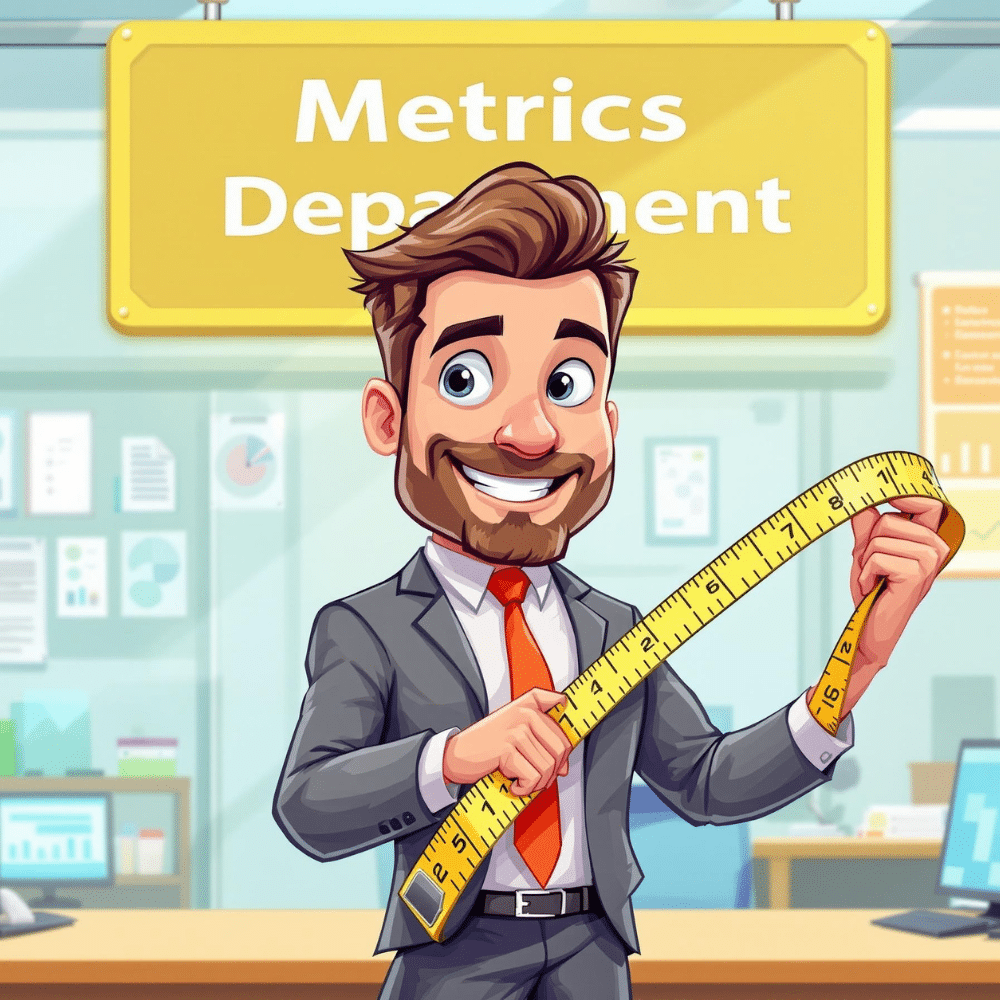Metrics to Help Measure & Maximize Your AdWords Success
Key Takeaways
- Tracking the right metrics ensures your Google AdWords campaigns deliver measurable ROI.
- The five most critical metrics are Click-Through Rate (CTR), Conversion Rate, Return on Ad Spend (ROAS), Cost Per Acquisition (CPA), and Customer Lifetime Value (CLV).
- Understanding these metrics enables better budget allocation and campaign optimization.
- Sublyme Digital specializes in helping businesses achieve success through data-driven AdWords strategies.
Why Metrics Matter for AdWords Success
Google AdWords (now Google Ads) can be a game-changer for businesses, but running successful campaigns requires more than just launching ads. Success hinges on data—specifically, understanding the metrics that determine whether your campaigns are performing well or falling short.
But with so many metrics available, it’s easy to get overwhelmed. Which ones matter most? How can you use them to optimize your campaigns and maximize ROI?
In this blog, we’ll explore the 5 most important metrics for evaluating Google AdWords success and provide actionable tips to help you interpret and improve these metrics. For additional insights into scaling your campaigns, check out our budget allocation guide.
1. Click-Through Rate (CTR)
What is CTR?
Click-Through Rate (CTR) measures the percentage of users who click on your ad after seeing it. It’s calculated as:
CTR = (Clicks ÷ Impressions) × 100
Why CTR Matters:
CTR is a key indicator of how engaging your ad is to your target audience. A high CTR means your ad copy, visuals, and targeting resonate well, while a low CTR suggests the need for improvement.
How to Improve CTR:
- Craft Compelling Ad Copy: Use action-oriented language and highlight unique selling points (USPs).
- Leverage Ad Extensions: Add sitelinks, callouts, and structured snippets to provide more value.
- Refine Targeting: Ensure your ads are shown to the right audience by using demographic and keyword targeting.
- Test Headlines: A/B test different headlines to identify what resonates best.
Pro Tip:
Google rewards ads with high CTR by improving their Quality Score, which can lower your cost-per-click (CPC).
Real-World Example:
A SaaS company improved its CTR by 30% by optimizing ad copy to focus on “free trials,” resulting in a lower CPC and higher conversions.
2. Conversion Rate
What is Conversion Rate?
Conversion Rate measures the percentage of users who complete a desired action (e.g., making a purchase, signing up, or downloading a resource) after clicking on your ad. It’s calculated as:
Conversion Rate = (Conversions ÷ Clicks) × 100
Why Conversion Rate Matters:
While CTR measures how well your ad attracts users, Conversion Rate evaluates how effectively your landing page and offer convert those users into customers.
How to Improve Conversion Rate:
- Optimize Landing Pages: Ensure your landing pages are fast, mobile-friendly, and aligned with the ad’s message.
- Simplify Forms: Reduce the number of fields in forms to increase completion rates.
- Use Strong CTAs: Include clear and persuasive calls-to-action (CTAs) on your landing pages.
- Leverage Social Proof: Add testimonials, reviews, or trust badges to build credibility.
Pro Tip:
Analyze conversion data by device type to optimize campaigns for mobile users, who often have different behaviors than desktop users.
Real-World Example:
An eCommerce retailer increased its conversion rate by 25% by simplifying its checkout process and adding customer reviews to product pages.
Success in Google AdWords isn’t about spending more—it’s about spending smarter by focusing on the metrics that matter.
3. Return on Ad Spend (ROAS)
What is ROAS?
Return on Ad Spend (ROAS) measures the revenue generated for every dollar spent on advertising. It’s calculated as:
ROAS = Revenue ÷ Ad Spend
Why ROAS Matters:
ROAS is the ultimate measure of profitability. A high ROAS indicates your campaigns are generating significant revenue relative to their cost, while a low ROAS signals inefficiency.
How to Improve ROAS:
- Focus on High-Performing Campaigns: Reallocate budget to campaigns with the highest ROAS.
- Use Smart Bidding: Let Google’s machine learning optimize bids for maximum ROI.
- Segment Audiences: Target high-value audiences, such as repeat customers or users with high purchase intent.
- Refine Keywords: Pause underperforming keywords and invest in high-converting ones.
Pro Tip:
Monitor ROAS by campaign type (e.g., Search, Display, Shopping) to identify which channels deliver the best ROI.
Real-World Example:
A clothing brand achieved a 400% ROAS during a holiday sale by focusing on retargeting campaigns for users who abandoned their carts.
4. Cost Per Acquisition (CPA)
What is CPA?
Cost Per Acquisition (CPA) measures the cost of acquiring a single customer. It’s calculated as:
CPA = Total Ad Spend ÷ Conversions
Why CPA Matters:
CPA helps you understand how efficiently your budget is being used to generate new customers. A low CPA indicates cost-effective campaigns, while a high CPA may require optimization.
How to Lower CPA:
- Improve CTR and Conversion Rates: Better CTR and conversion rates naturally reduce CPA.
- Use Negative Keywords: Filter out irrelevant traffic to focus on high-intent users.
- Adjust Bidding Strategies: Test manual bidding, target CPA bidding, or maximize conversions bidding.
- Test Ad Placements: Identify and prioritize high-performing placements.
Pro Tip:
Set CPA targets based on your average customer lifetime value (CLV) to ensure profitability.
Real-World Example:
A B2B company reduced its CPA by 20% by using negative keywords and optimizing landing pages for mobile users.
5. Customer Lifetime Value (CLV)
What is CLV?
Customer Lifetime Value (CLV) measures the total revenue a customer generates over their lifetime relationship with your brand.
Why CLV Matters:
CLV provides a long-term perspective on the value of your customers, helping you justify higher CPAs for high-value customers.
How to Maximize CLV:
- Upsell and Cross-Sell: Encourage repeat purchases with personalized recommendations.
- Focus on Retention: Use email marketing and loyalty programs to keep customers engaged.
- Segment High-Value Customers: Allocate more budget to campaigns targeting repeat buyers.
- Improve Customer Experience: Ensure seamless interactions at every touchpoint.
Pro Tip:
Combine CLV with CPA to calculate the ROI of your campaigns more accurately.
Real-World Example:
An online subscription service increased its CLV by 30% by implementing a loyalty program and upselling premium plans.
We Build Cool

Success Stories
365 Data Centers
Discover how we rapidly rebuilt and optimized a 30-page website for 365 Data Centers, restoring their online presence and managing digital ad campaigns across key regions to drive engagement and growth.
XTECH Football Pads
Discover how we transformed XTECH Football Pads‘ digital presence, boosting their online sales and tripling website traffic through innovative website development and user experience enhancements.
BeEarth Foundation
Discover how we partnered with the BeEarth Foundation to develop a website that aligns with their mission of sustainability and global engagement. Our work has significantly increased their online visibility and engagement, supporting their efforts to promote sustainable development.
We Recycle Solar
Learn how we illuminated digital success for We Recycle Solar by completely redesigning their website to reflect their leadership in the growing solar recycling industry and implementing strategic digital advertising campaigns that enhanced their visibility at key industry events.
Preferred Home Health Care & Nursing Services
Explore how we elevated the digital presence of Preferred Home Health Care & Nursing Services by enhancing their website for better lead generation, building a dedicated site for staff recognition, and optimizing SEO for their location pages.
What Our Clients Say: Elevating Online Success
Conclusion: Measure Success, Scale Smarter
Evaluating Google AdWords success requires focusing on the metrics that matter most. By tracking CTR, Conversion Rate, ROAS, CPA, and CLV, you can gain deep insights into your campaigns, optimize for better performance, and scale effectively.
At Sublyme Digital, we’re passionate about helping businesses succeed with data-driven strategies. Whether you’re looking to improve your ROI or scale your campaigns, we have the expertise to guide you every step of the way.
For more insights into scaling strategies, check out our budget allocation guide and discover how to take your AdWords campaigns to the next level.
FAQs
Answer: It depends on your goals, but ROAS is often considered the ultimate measure of profitability.
Answer: Craft compelling ad copy, use ad extensions, and refine your targeting to ensure your ads resonate with your audience.
Answer: Conversion Rate measures how effectively your landing pages and offers turn clicks into customers, making it critical for ROI.
Answer: CPA focuses on the cost of acquiring a customer, while ROAS measures the revenue generated relative to ad spend.
Answer: Sublyme Digital specializes in data-driven strategies to optimize your campaigns and maximize ROI. Learn more in our budget allocation guide.
Let's Build Something Sublyme
Ready to maximize your AdWords success? Contact Sublyme Digital today for a free consultation and let’s build your digital success together!



